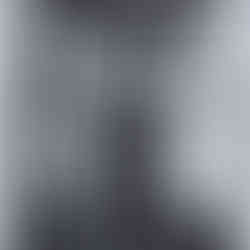
Abel Alejandre, My Fathers; Image courtesy of the artist
Constructing Masculinity
“There is a time in a boy’s life when the sweetness is pounded out of him; and tenderness, and the ability to show what he feels, is gone.” ~Norah Vincent
Written by Betty Brown Abel Alejandre employs his astonishing technical skills to create compelling images of modern male identity. Raised by his maternal uncle as much as his biological father, the young artist observed two very different constructions of manhood. His father was a “macho” man, with all the attendant violence based on emotional repression. The father professed intense resistance to creative expression, considering it a form of weakness. He kicked his teenage son out of the house when Alejandre insisted on being an artist. (Ironically, Alejandre senior has now become an artist in his own right, but that’s another story.) In contrast, Alejandre’s uncle–a gay designer–supported the boy’s aesthetic ambitions, buying him materials and making sure he had a safe place to live and work.
In 2010, Alejandre created a large woodblock print (98″ x 50″) on muslin that he titled My Fathers. (Alejandre is a gifted printmaker, producing sizable prints on his studio press.) Portraits of the two men confront each other on a white background. The uncle lifts a hand to his chin in a pensive gaze. On the right, the father figure has a growling wolf covering the lower half of his face. The fanged mouth of the canine covers that of the human, to imply that the fierce, wild animal inside him is “speaking” or perhaps yelling aggressively. Multiple textures, each built by a different series of crosshatched lines, heighten the intensity of the conceptual confrontation between the two men.
As Alejandre’s work developed, he mastered two consistent characteristics, both of which are visible in My Fathers. First, the artist’s oeuvre is formally dynamic, based on black and white images and finely wrought linear details (i.e., the crosshatching mentioned above). Second, it juxtaposes portraits of men with depictions of animals to reference mythic narratives from cultures as diverse as the Ancient Greeks or the Ancient Aztecs. The allegorical undertones give significant resonance to his images: The father is not exactly a werewolf, but the malevolent threat is undeniable. Alejandre visually recounts archetypal stories to explore the violent aspects of male identity.
Alejandre’s El Jefe (“The Boss,” 2018, acrylic on wood) presents a man turned into a snarling ape, with a Cyclops-like eye in the middle of his forehead. The Greeks described the Cyclops as a savage, uncivilized race from a lawless land. Sadly, we have all known bosses who viewed the “laws” of polite society with disdain, certain that their positions entitled them to wield power (especially power over the disenfranchised) without ethical constraint.

Abel Alejandre, El Jefe; Image courtesy of the artist
Office Mentor (2018, acrylic on wood, 48″ x 48″) presents a modern man as a muscle-bound Minotaur. (The Minotaur was a half-man/half-bull monster from Ancient Greece. Imprisoned in the labyrinth on Crete, the Minotaur demanded youths and maidens to feed his cannibalistic cravings.) His nose adorned with a metal ring, this horned demon surveys his realm with quiet calculation. Who will he intimidate and dominate next? Alejandre speaks of observing predatory male behavior in every one of the jobs he’s had. He has witnessed self-identified mentors assume positions of power in the workplace, offering to help young women as a ploy to seducing and controlling them.
Another bull appears in Alejandre’s Ride a Unicorn (2017, acrylic on wood, 48″ x 38″). A Mexican cowboy sits atop a rearing bull, as if riding him in a rodeo competition. Or perhaps it’s a mechanical bull, and he’s riding it on an alcohol-induced dare. The bull has an artificial horn on his forehead, transforming him into the legendary steed. (Scholars believe that the Biblical reference to unicorns [Deuteronomy 33:17] actually refers to a wild ox, which is not so far from Alejandre’s wild bull.) The cowboy may be holding on to the bucking animal, but he needs the assistance of at least four faceless men to prop him up. The bull/unicorn is branded, on his left hip, with the number 45. It is an overt reference to our forty-fifth president, a hyperbolically masculine man who similarly needs a lot of “propping up” in order to exercise his egocentric powers.
I am reminded of how Ancient Assyrian kings (like Ashurbanipal or Ashurnasirpal) articulated their royal masculinity by enacting lion hunts inside ringed enclosures like Spanish bull rings. (Today’s bullfights are the descendants of such events). Protected by a team of warriors, the Assyrian king was never actually in danger. The lion hunt was all theater, staged to impress viewers with the king’s strength and skill. Much like Alejandre’s cowboy in Ride a Unicorn, the Assyrian kings were projecting (narcissistic) images of themselves as invulnerable, domineering men. They were constructing masculinity through sports entertainment just as many men today enact virility in homes and offices, bars and competitive athletic venues. Masculinity must be performed according to cultural dictates; it is not a “natural” identity.
Abel Alejandre’s art helps us understand how that identity is constructed.
#losangeles #california #losangelesartist #art #painting #shoeboxpr #laverne #losangelesart #contemporaryart #southerncalifornia #abstract #collage #artgallery #artinterview #gallery #museum #artandcake #artexhibition #installation #fineart #artist #soloshow #mixedmedia #arts #artreview #artmagazine #ArtandCulture #exhibition #exhibit #bettybrown #abelalejandre


















